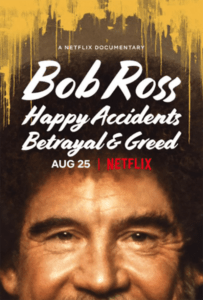By Dom Cioffi
As soon as I graduated from college, I took a job and went to work in the corporate world. I wore a suit every day and called on customers in an attempt to earn their business. It was not my dream situation, but I was under the impression that it was time for me to grow up and be part of the “real world,” whether I liked it or not.
It took a little over a year and half to finally realize that I wasn’t cut out for that lifestyle. I was a creative type and none of my creative sensibilities were being excited. I thought about it for many months and then quit.
I didn’t know what I was going to do next, but I knew it had to be something I enjoyed or my life was going to turn into one long act of drudgery. I decided to assess my skills and interests and see if I couldn’t coalesce the two into a reasonable career path.
Throughout my school years, I had always excelled at art. I aced every art class I was in, drew pictures for my high school and college yearbooks, and had won awards for several of my designs. And it seemed like any time I sat down to relax, I always ended up doodling.
I also had a knack for creative writing and was told by several college professors that I should pursue journalism since I was able to churn out copy so quickly. When I put those two together, it was clear that I should either write and illustrate children’s books or draw cartoons. Since the book thing seemed more daunting, I decided to go the cartoon route.
The idea of drawing cartoons was not new to me. I had drawn hundreds of cartoons over the years in my notebooks and drawing pads. I’d come up with funny ideas and then sketch them before handing them around for my roommates or family to admire. I guess I had fantasized about being a cartoonist, but never took the idea seriously until life forced my hand.
I knew it wasn’t something I could approach haphazardly, so I made a definitive plan for myself. I would create 10 single-panel cartoons (in the same vein as “The Far Side”) and then approach local newspapers to get them published. Once officially published, I would then create a marketing package to send off to cartoon syndicates in the hope of one day being nationally syndicated.
I would give myself one year. If I couldn’t make substantial gains on this path in that time, I would reassess and head in a new direction.
I spent weeks searching through my sketchbooks for the best ideas. Once I had 10 solid concepts, I went to work drawing them. I wanted to have a unique and noticeable style, so I made sure every panel had a similar feel. I then carefully crafted the text that would accompany each cartoon, spending hours getting the cadence and structure of the words just right.
I remember an immense feeling of accomplishment when I had all 10 panels completed. I then planned to visit every weekly newspaper in Vermont. My goal was to meet each publisher, introduce myself and my cartoons, and then hopefully leave with an agreement for publication. If I couldn’t see the publisher, I had a small packet to leave behind so they could still review my work.
I also had a nifty idea where I would send each publisher one of my cartoons in which they were a character in the panel. I hoped that one small act would endear me to them.
The first newspaper I approached was The Mountain Times, where the publisher agreed to see me. He reviewed my work, laughed at a few cartoons, then asked me some unrelated questions about my life. He then told me he’d think about publishing my work and get back to me.
By the time I arrived home, he had left a message on my answering machine to call him. He told me he would be happy to publish my cartoons but was more interested in hiring me part-time to work at the newspaper.
My cartoons ultimately ran in The Mountain Times for several years, but more importantly, I began a new career path in the newspaper business where I spent the next 15 years.
I learned an important lesson in that experience: Follow your passion and opportunities will reveal themselves.

Bob Ross followed his passion of painting landscapes and in the process inspired millions of people to tap into their inner artist. But as the new documentary from Netflix, “Bob Ross: Happy Accidents, Betrayal & Greed” reveals, behind this endearing story of passion and success, lies an ugly grab for power.
Check this one out if you’ve ever been lulled into a meditative trance by one of Bob Ross’s painting shows. You’ll learn that the man at the center of this story was as genuine and sincere as they get — it was the characters around him that caused the problems.
A happy little “B” for “Bob Ross: Happy Accidents, Betrayal & Greed.” Got a question or comment for Dom? You can email him at [email protected].




